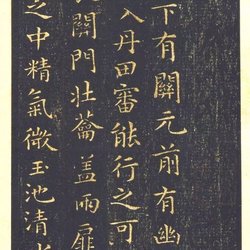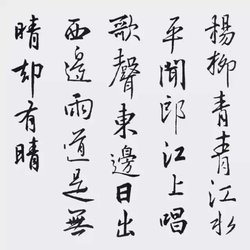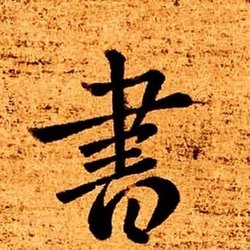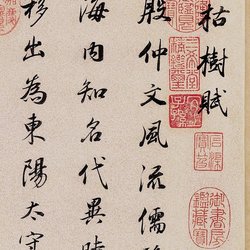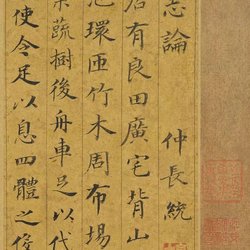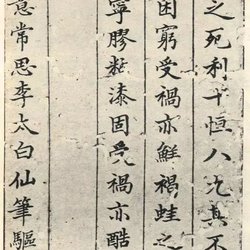

Dong Qichang's regular script "Zi Gao Shen Tie" volume, silk, 414.3cm in width and 26.8cm in length, written in the 24th year of Wanli in the Ming Dynasty (1596), collected by the Liaoning Provincial Museum.
"Dong Qichang's Self-Report" is an edict written by Dong Qichang himself by Emperor Wanli of the Ming Dynasty to reward his parents and wife. There is an inscription and postscript written by Qianlong at the beginning of the volume. It was originally included in the Qing Palace's "Shiqu Baoji" and was collected by the Liaoning Provincial Museum after the fall of the Qing Dynasty.
Dong Qichang's regular script "Zi Gao Shen Tie" volume, Gao Shen Tie in regular script with black silk columns on Korean paper, framed into one volume. The first section is for the posthumous title of his father Dong Hanru and the mother Shen, and the second section is for Dong Qichang himself and his wife Gong. The former was written on the 24th of the leap August in the 24th year of Wanli in the Ming Dynasty (1596), and the latter was written on the 28th of the same month in the same year. The two are only four days apart. There is a long inscription from Qianlong at the beginning, describing the origin and evolution of imperial titles. Most of Dong Qichang's calligraphy handed down from generation to generation is cursive, while regular script is rare. The reason is that "regular script is not easy to work on." He believes that if the characters are written like "calculator", it is not a book. The calligraphy in this painting is neat, the pen is solemn, and the writing is meticulous. Each stroke has its purpose. The writing is powerful and the fat and thin are moderate. It is a model of his regular script. It was kept in the inner palace for a long time during the Qing Dynasty and recorded in "The Continuation of Shiqu Baoji".
HD partial
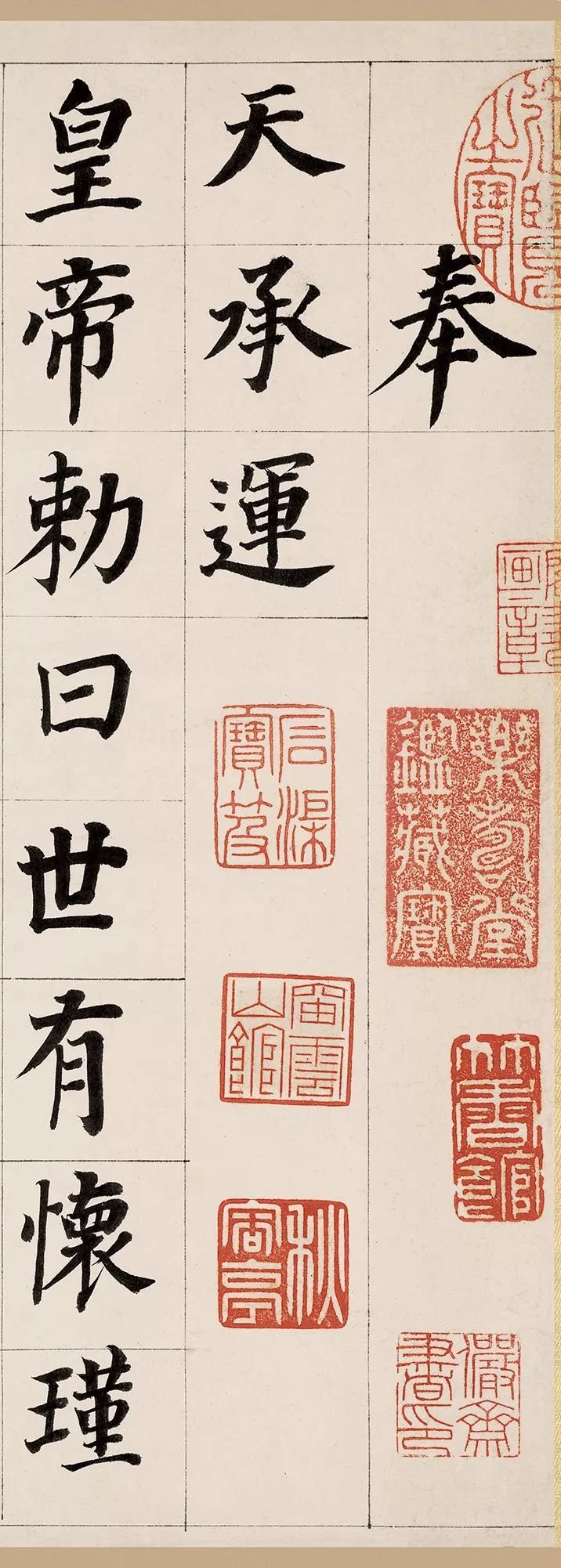
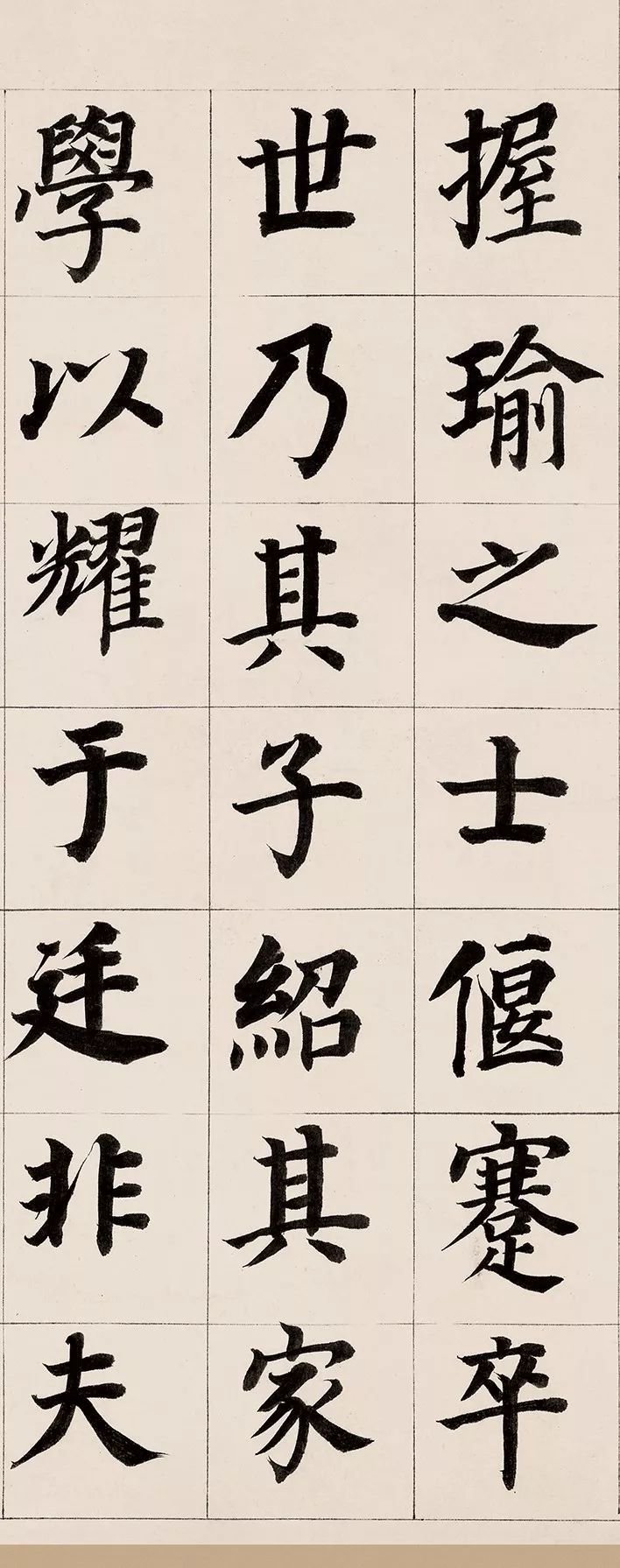
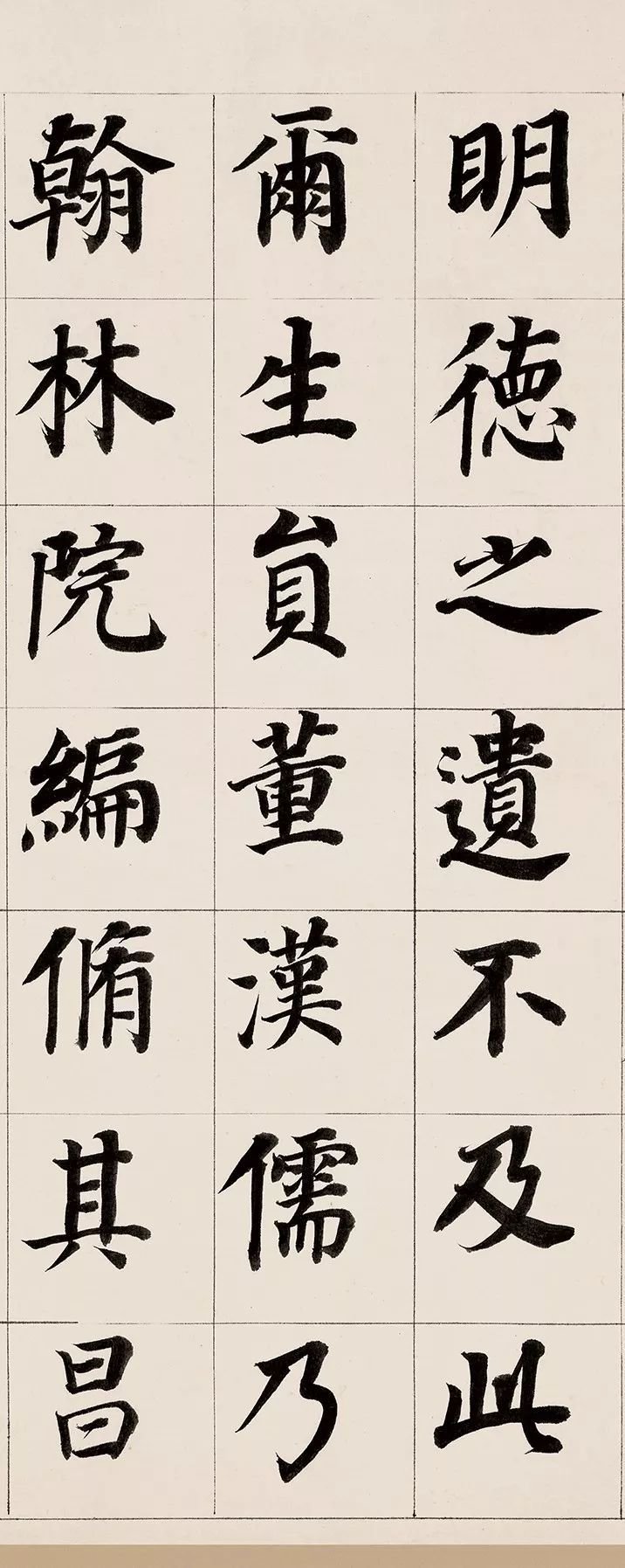
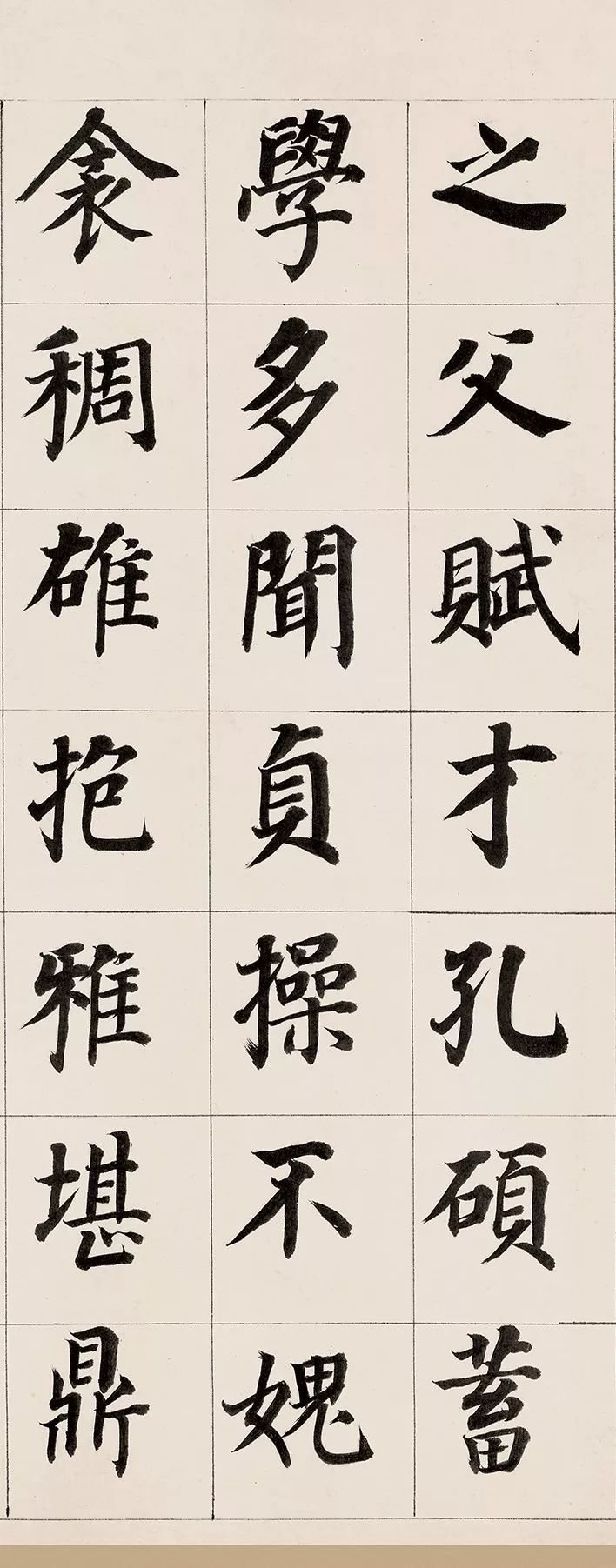
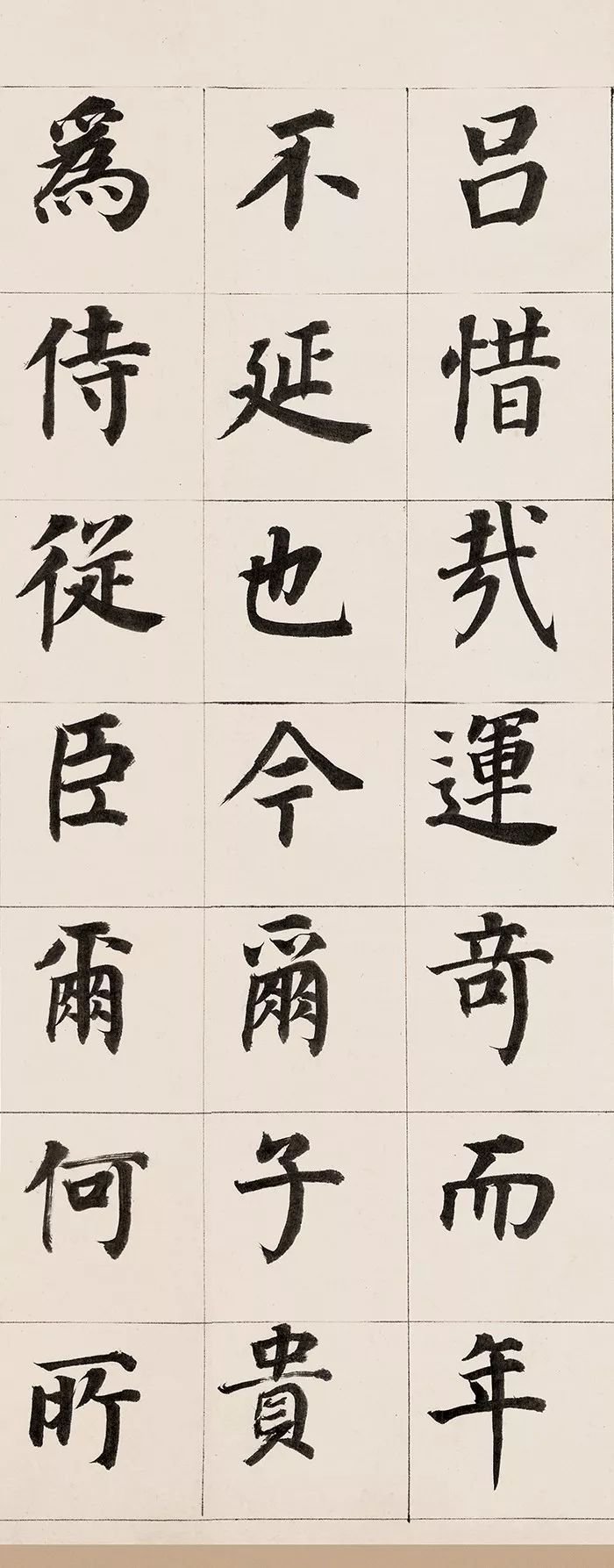
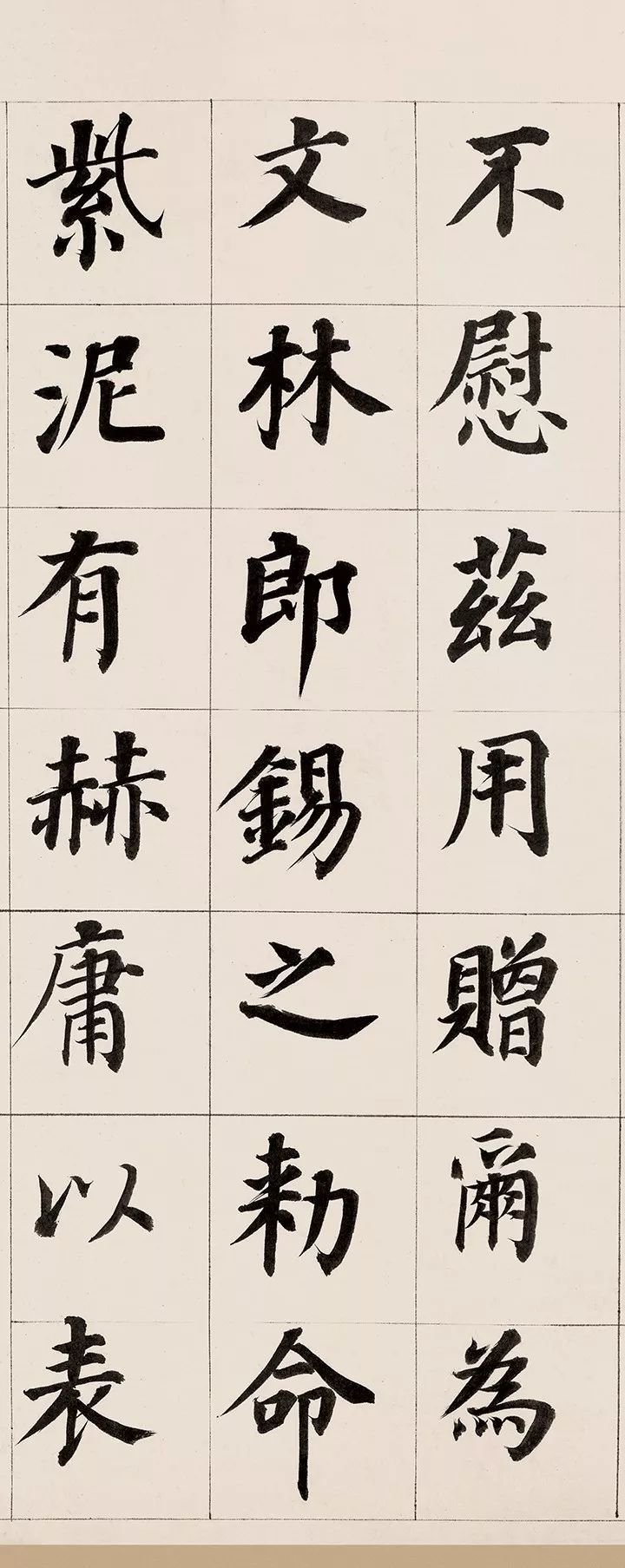
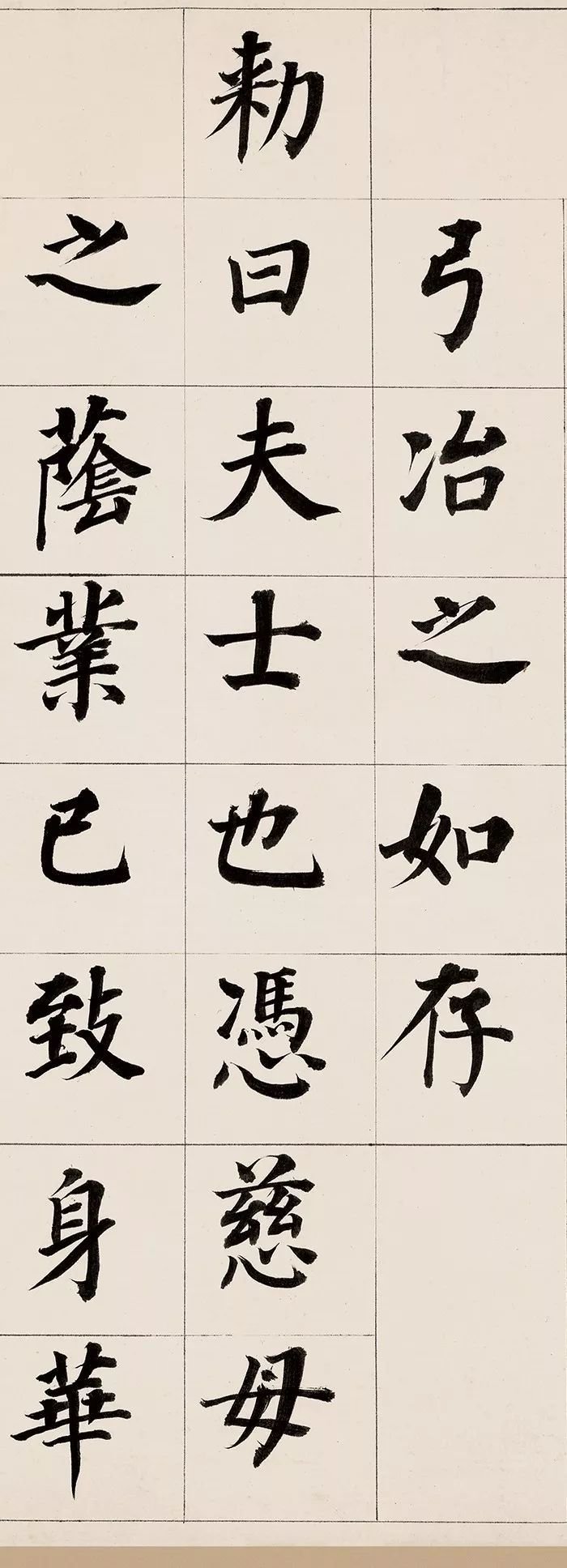
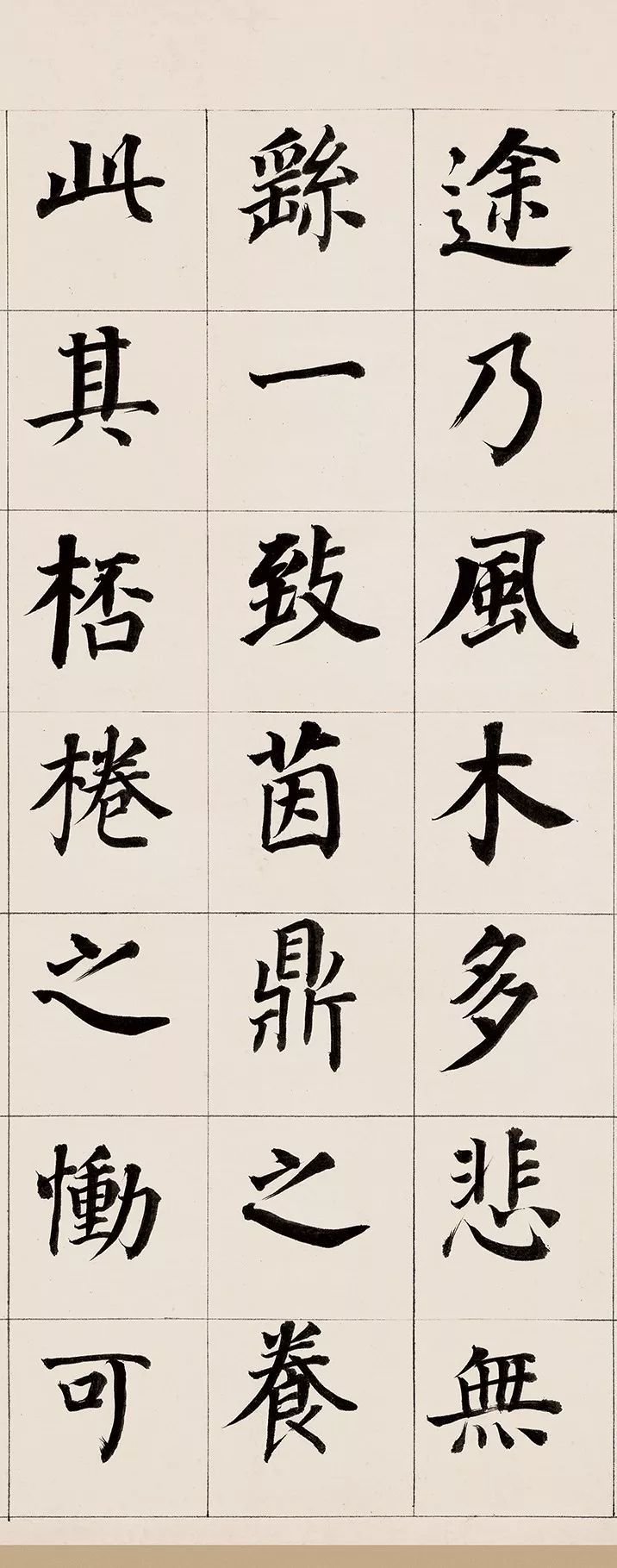
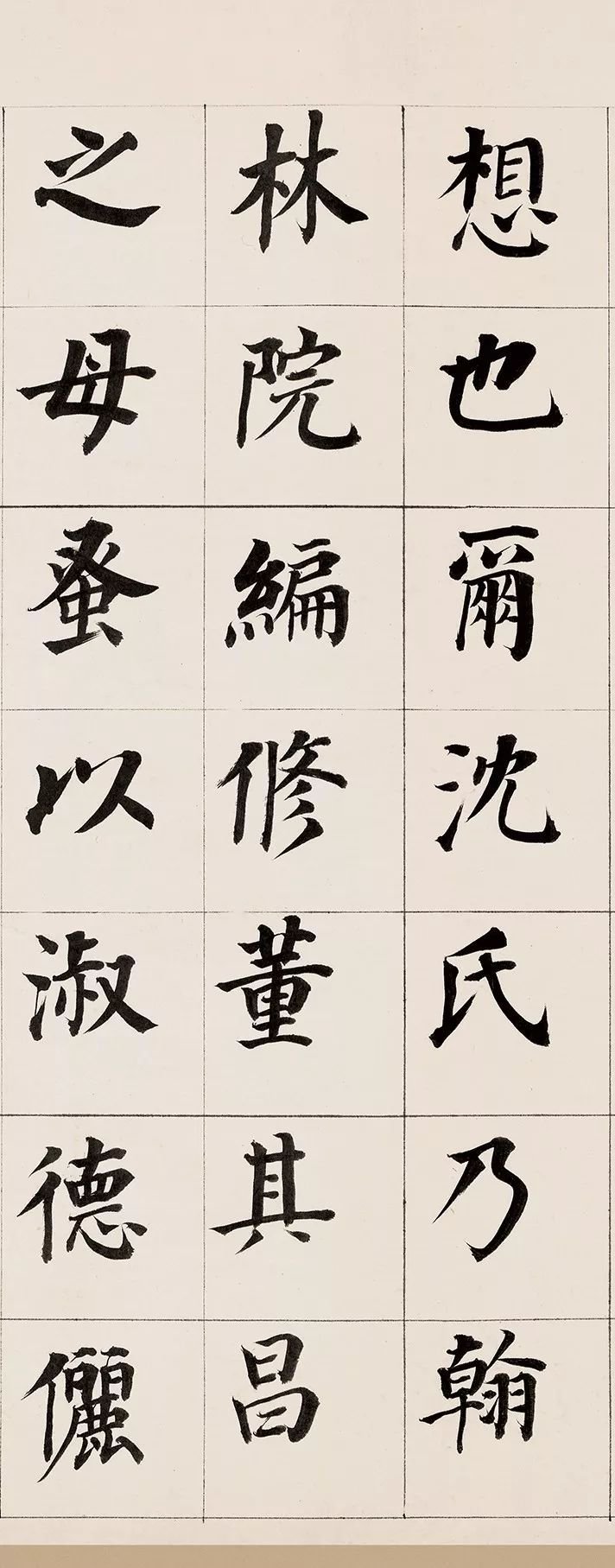
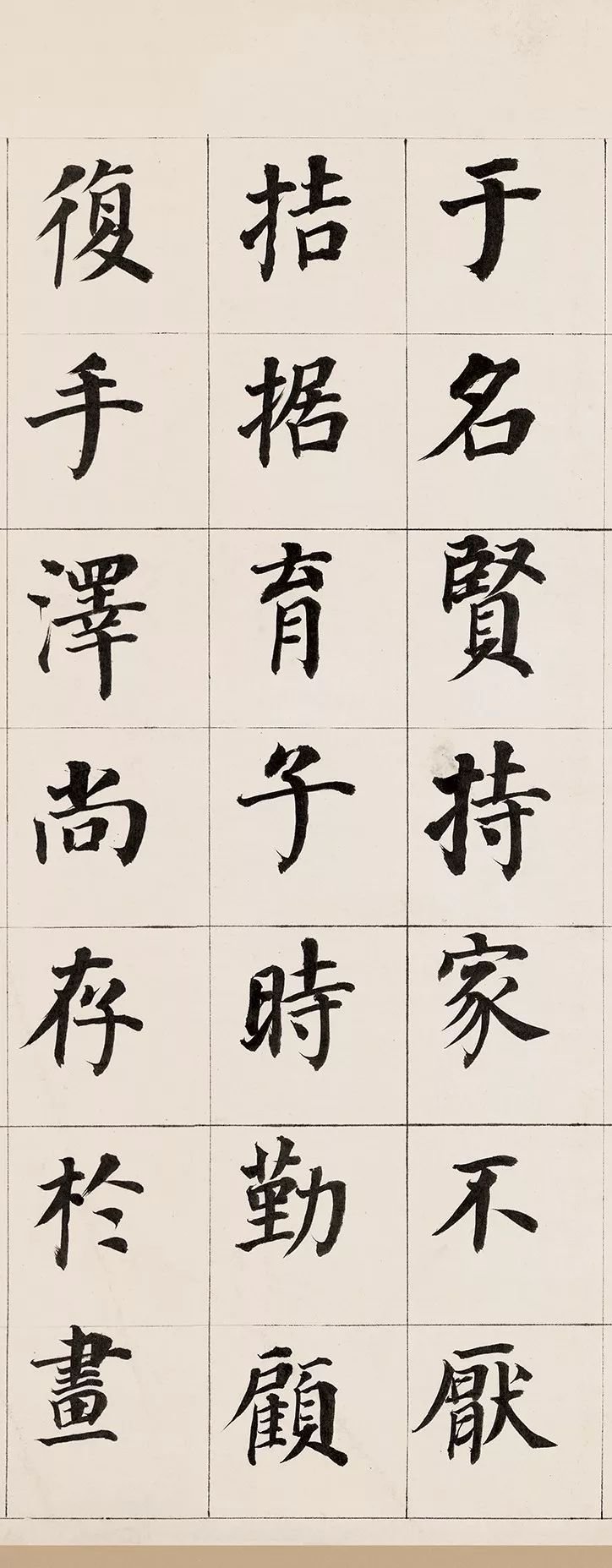
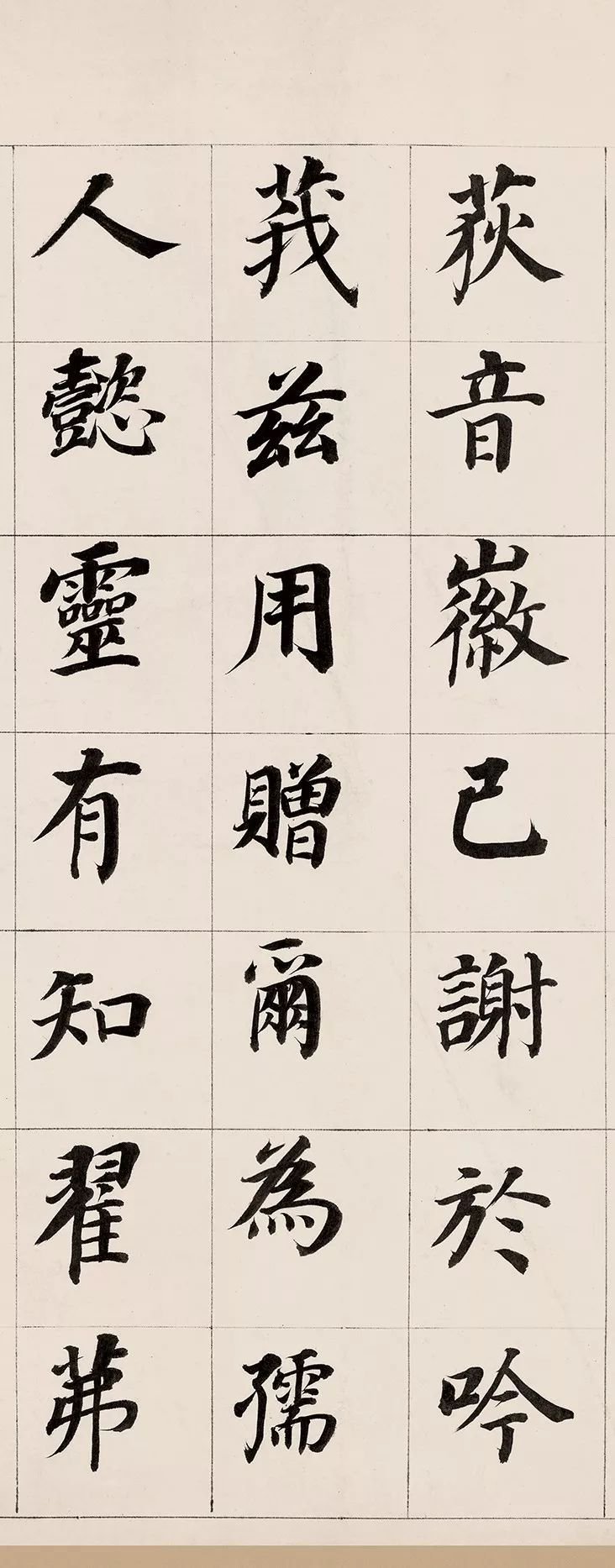
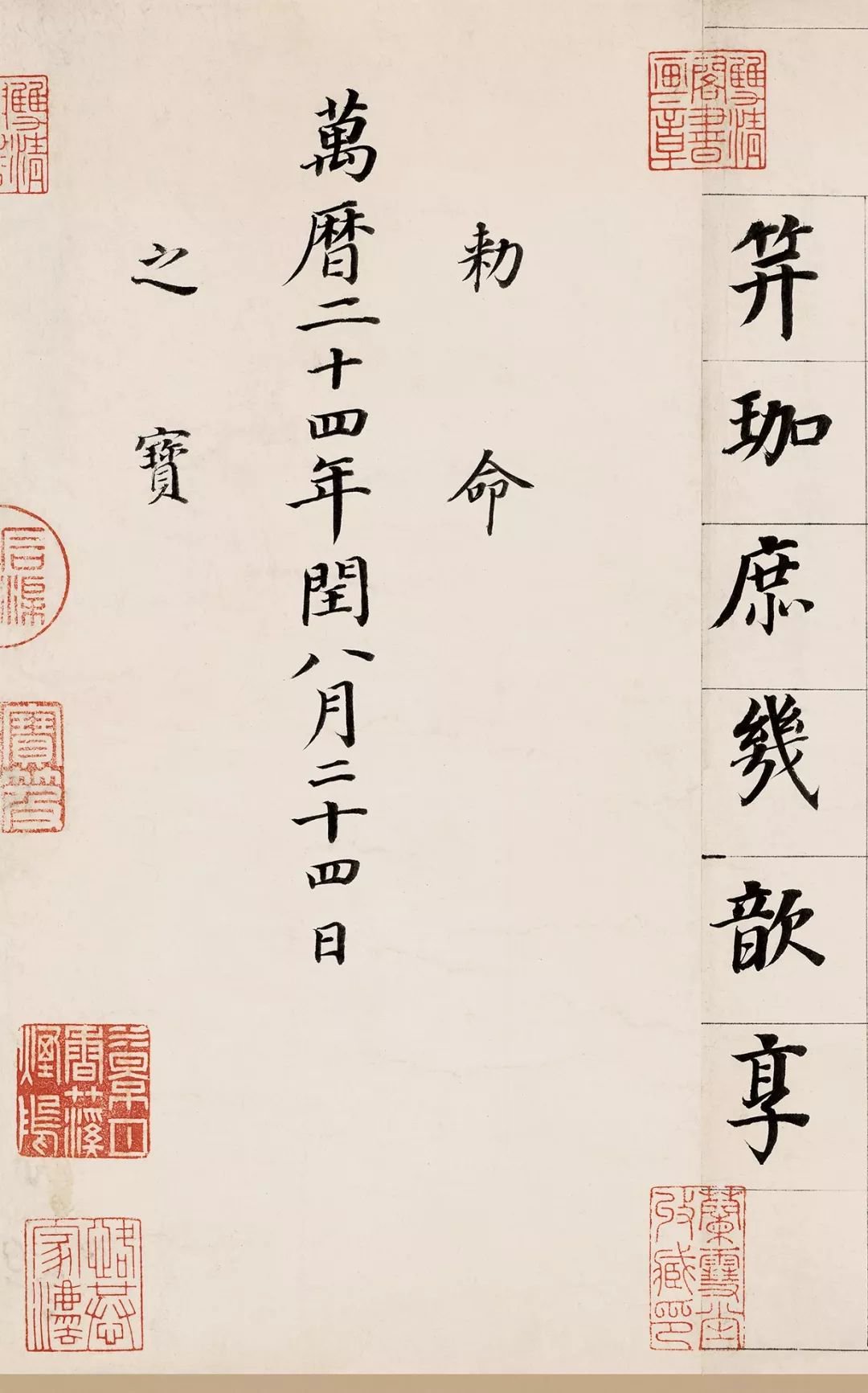
Explanation:
Fengtian Chengyun The emperor said:
There was a scholar in the world who was Huai Jin and Yu. When Yan Jian died, it was his son who taught his family and made him proud in the court. The legacy of Feifu's Mingde is not as good as this.
Dong Hanru, a student, was the father of Qichang, the editor of Hanlin Academy. He is gifted and talented, has accumulated a lot of knowledge, is worthy of his chastity, has a thick quilt and a strong embrace, and is as elegant as a tripod. What a pity! The luck is amazing but the years are not delayed. Now, you are honored to be your attendant, why should I not be comforted? I would like to use it and give it to you as Wenlin Langxi. Imperial Order: Purple clay is a symbol of prominence, and bows and smelting are as good as existing ones.
The imperial edict said: Husband, scholar. With the shadow of a loving mother, I have embarked on a beautiful journey. The wind and trees are full of sorrow and no worries, and they are nourished by the same Yin Ding. I can only imagine the mourning in the cups. Mrs. Shen was the mother of Dong Qichang, editor of the Hanlin Academy. She was a well-known figure for her virtues. She never tired of financial hardships in running the household. She was diligent and caring when raising her children. Her talent is still preserved in painting, and her musical emblem has been thanked by Yin. I would like to use it and give it to you as a child. Yi Ling has knowledge, Zhai, Fu, hairpin, and common people enjoy it!
Edict.
The Treasure of Leap August 24th in the Twenty-Fourth Year of Wanli
Fengtian Chengyun The emperor said:
The country has set up a forbidden forest to live in a fashionable and handsome manner, and to pretend to be leisurely. It is also said that the person who stands outside the chaos can shoulder the great power. His expectation is to be a bandit. Yeer Hanlin Academy editor Dong Qichang Boyahong In the late Qing Dynasty, Xiuyan Shi Yuying was secretly poor, and he was in trouble. If Hua Zhong looks at the ground and responds with a lustful heart, it will be a failure. I have chosen you to have a good career. I am indifferent and endearing, and I recommend you to the scholar Lin Yu. You are Jiayi, chaste and loyal to me, and you have a future destiny. I read the chapter of Tong Guan. , knowing that there is a pot of virtue in ancient times, he led his wife in the official version of the history of women, Wu Shi, Mo Qi, and did not think about it. Therefore, I did not praise it in the book. The Hanlin Academy edited Dong Qichang's wife, Gong's Wanyan. Biao Zhen, Lan Wan, Shu Shen, Zhen Mo, Dan Mao, Zan Mingguang, Erfu Yeran, a good historian of the time, Erneixiang, Yihongji, I hereby use the title of "Er," "ruren", "Shangyi piety", the four virtues, and call it "Lun Chong".
Edict.
The Treasure of Leap August 28th in the Twenty-Fourth Year of Wanli
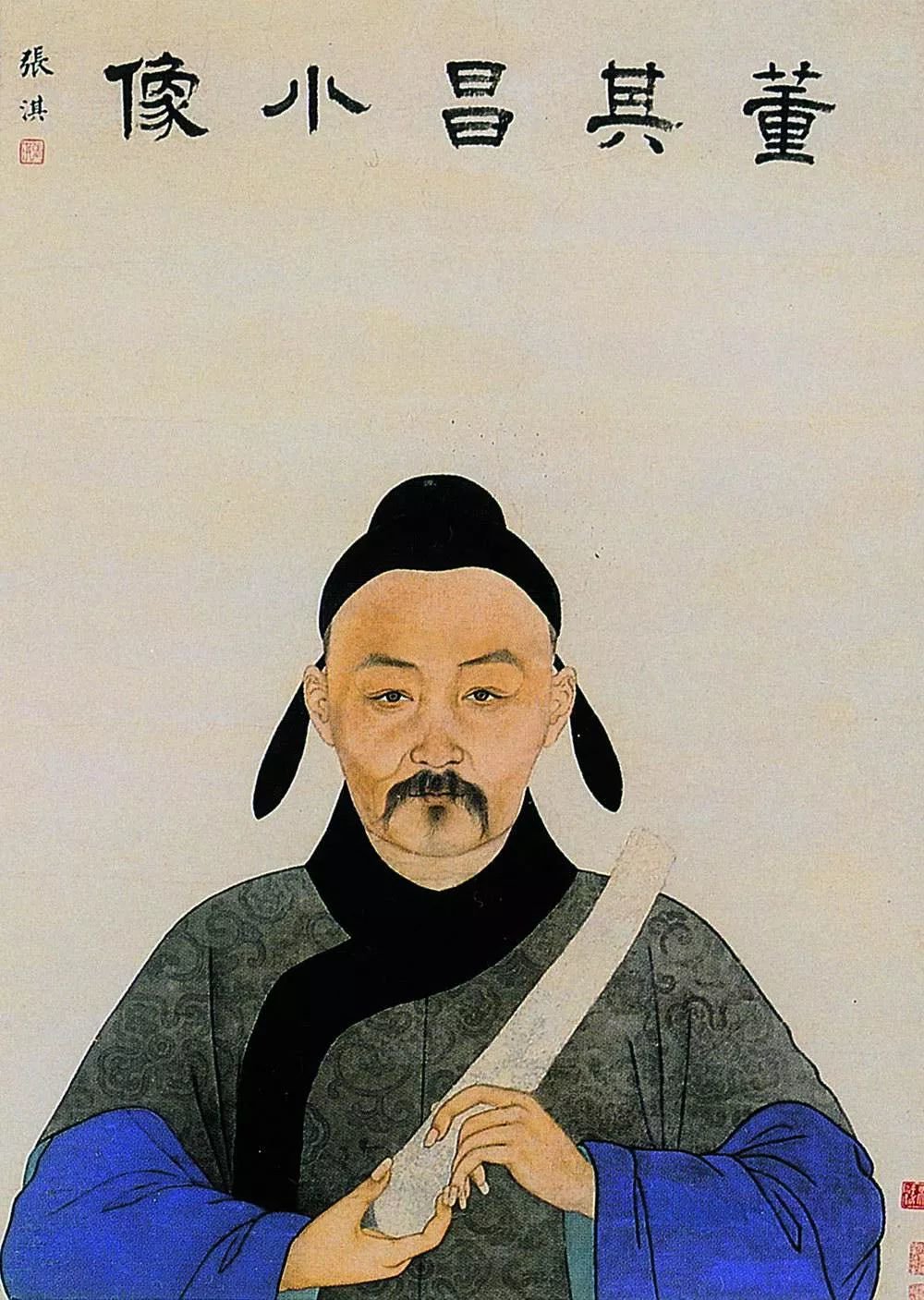
Dong Qichang (1555-1636), also known as Xuanzai, Sibai, and Xiangguang Jushi, was born in Huating, Songjiang (now Songjiang County, Shanghai). He served as the Minister of Rites in Nanjing and was given the posthumous title Wenmin. Known as "Dong Xiangguang", "Dong Wenmin" and "Dong Huating" in the world, he was famous for his calligraphy and painting in the late Ming Dynasty.
Dong Qichang's path to learning calligraphy was very difficult. The reason was that his calligraphy was not good in the exam, so he worked hard and became famous. This is described in his "Essays on Painting Zen Rooms", in which he also described his learning process: "I first studied "Duobao Pagoda" by Yan Pingyuan, and then changed to study Yu Yongxing. He thought that Tang books were not as good as those of Jin and Wei Dynasties, so he imitated "Huang Ting Jing" and Zhong Yuan Chang "Declaration Table", "Li Ming Table", "Huan Shi Tie" and "She Bing Tie", every three years, claiming to be following the ancient times... I traveled to Jiaxing and saw all the authentic works in Xiang Zijing's family collection, and also saw Youjun's "Guan Nu Tie" was in Jinling, and Fang Wu once arbitrarily commented on it." It can be seen that he carefully copied the ink of ancient famous masters, and was able to integrate the strengths of each school in terms of the use of pen, ink and structure. . Taking the ancients as his teacher and the ancients as his method, his calligraphy achievements are due to his hard work and diligence, and his ability to understand and reflect deeply. On the other hand, he cannot ignore his interactions with the great collector Xiang Yuanbian, who can fully appreciate his calligraphy achievements. Many authentic paintings and calligraphy. Calligraphy reached Dong Qichang, which can be said to be the culmination of ancient methods. The "Six Styles" and "Eight Methods" were mastered by him. At that time, he was already "famous in foreign countries. His short calligraphy with short rulers was circulated in the world, and people competed for it." "("History of Ming Dynasty·Biography of Wenyuan"). Dong Qichang's proficiency in official career was unmatched by the previous calligraphers of the Ming Dynasty. In the Qing Dynasty, Kangxi praised and favored Dong's book even more, and even copied Dong's calligraphy in person. He often placed it on the right side of his seat and watched it morning and evening. Wang Wenzhi, a famous calligrapher in the Qing Dynasty, once praised in his "On Calligraphy Quatrains": "Dong Huating is a divine calligrapher, and his ink is clear and spiritual. Except for the plains, everyone avoids the table. At the same time, there is no need to talk about Zhang Xing." At that time, all scholars imitated Dong Qichang. With his beauty and softness, the calligraphy world in the early Qing Dynasty was shrouded by Dong Qichang. The decline of calligraphy style is really a tragedy for the calligraphy world. There are also many critics of Dong Qichang, with Bao Shichen and Kang Youwei being the most fierce. Kang Youwei's "Guang Yi Zhou Shuang Ji" says: "Although Xiang Guang is famous, he is like a Taoist priest who has no food, and his demeanor is frugal. If you encounter a general who has organized an army with great force, built towering barriers, and whose flags have changed color, he will be bound and afraid to go down the mountain. .”
His calligraphy is most accomplished in cursive script. His cursive script is based on the "Two Kings" and he also benefited from Yan Zhenqing, Mi Fu and Yang Ningshi. Zhao Mengfu's calligraphy style also influenced his creation to a greater or lesser extent. Cursive script is rooted in Yan Zhenqing's "Struggle for Seats" and "Manuscript of Sacrifice to Nephew", and has Huai Su's roundness and Mi Fu's ups and downs. The pen is skillful and can always maintain a straight edge. There are very few clumsy or clumsy strokes in the works. The ink is also very particular, with dry and wet shades, making the best use of it. The style is calm and natural, quaint and peaceful, or different from others. The day-long temperament is related to Yi and the understanding of Zen principles. Many of the works have grass in the lines, and the brushstrokes have Yan Zhenqing's straightforward meaning. The posture is like Mi Fu's side kick, and the layout is Yang Ning's leisure and comfortable. His expression and charm are like Zhao Mengfu's, light and easy and elegant. Dong Qichang is also quite proud of his regular script, especially small regular script.
Dong Qichang is knowledgeable and proficient in Zen theory. He is an accomplished calligrapher and painter who has a certain status in the history of Chinese art. His "Essays on Painting a Zen Room" is an extremely important work in the study of Chinese art history.

